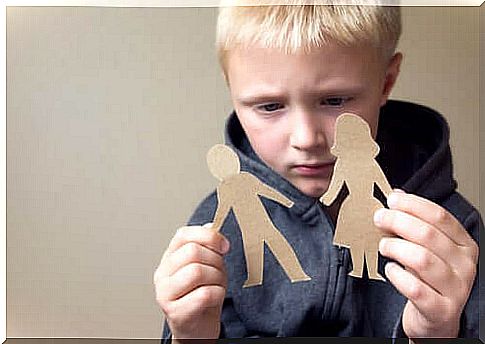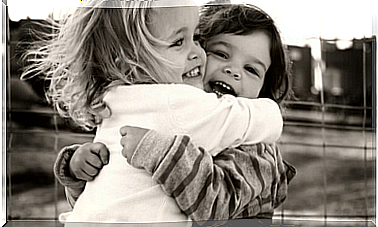Joint And Exclusive Custody

A divorce is an event capable of triggering a certain number of emotions, very often conflicting. In this context, legal psychology pays particular attention to the most vulnerable part: minors. When a relationship is broken, many questions arise concerning the children: where will they go to live? How often will they be able to see their parents? Is joint or exclusive custody better ?
Even if in some cases the conditions do not allow it, in others a question is entrusted to the emotions that can be resolved by psychologists: despite the differences, and if the conditions exist, is joint custody advisable or not? And may sole custody have no impact on the child? What are the differences between one and the other in terms of well-being?

Joint custody and exclusive custody: in a nutshell
The so-called divorce law, approved in Italy following the referendum in 1970, provides for exclusive custody to one of the two parents. In other words, the custody and care of the minor are entrusted to one of the two parents, while the other has the obligation to visit.
This aspect underwent changes in 2006, following the observation of the harmful effects that sole custody had on the children of divorced couples. That year the concept of shared custody is introduced, according to which the care, well-being, protection and custody of the minor are the responsibility of both parents, therefore the minor can live with both in different periods.
According to ISTAT, in 2015 about 89% of divorce cases ended with joint custody, while only 8.9% of children were entrusted exclusively to the mother.
What does the scientific literature say about it?
Two Spanish researchers, Tejeiro and Gómez (2011), conducted a meta-analysis on divorce, custody and child well-being, based on the study of psychological research. The conclusions of their study have been well received by the scientific community: there are differences in terms of well-being between a minor who faces shared custody and one who faces exclusive custody.
Both authors report what Bauserman (2002) had already confirmed following the analysis of 33 studies on the best parametric attributes: children facing shared custody are better off than those experiencing sole custody. Some of the differences between the two forms of entrustment that the different meta-analyzes cited suggest are:
- Greater involvement of fathers in joint custody.
- Less depression in joint custody.
- Major emotional problems in sole custody.
- Less rivalry between siblings and higher self-esteem in joint custody.
- Tendency to feel rejected by a parent, in cases of sole custody.
- Greater awareness of oneself, of the locus of control and of relationships with parents in joint custody.
The results of other studies, however, indicate that the type of foster care chosen does not appear to have any effect on the emotional health of the children.
Joint custody and the effects on the family
Shared custody appears to benefit not only children but also parents who separate. This is what Marín Rullán (2015) argues, according to which low levels of conflict and high levels of communication trigger a scheme of cooperation between parents, thanks to which both are more satisfied than parents who do not use this scheme.
Conflict between parents is perhaps the aspect that determines the greatest negative impact on children. For this reason, much of the well-being of minors lies in the parents’ ability to behave well.
Quite often, although it may be thought that shared custody is the right choice for the child, it could actually involve more contact between two people whose relationship is destroyed. Yet, Tejeiro and Gómez also calculated this variable in their meta-analysis, with the result that shared custody appears to reduce the levels of tension between the two parents.
In the case of shared custody, another doubt concerns the obligation to see an ex-husband or an ex-wife every certain amount of time, which would prevent the healing of still open emotional wounds. Studies suggest, however, that this is an unfounded fear. The distance between parents, as measured by Pearson and Thoennes (1990), tends to increase within two years regardless of the type of foster care.
What happens to families after 12 years?
This is the question that Emery, Laumann, Waldron, Sbarra and Dillon (2001) asked themselves when they decided to observe what happens in families in which shared or individual custody was chosen (in the latter the conflicts between parents were major). Of the conclusions reached, the most interesting was that the parents of the custody children were little involved in the life of the other parent.
The authors also noted that joint custody parents tended to opt for major changes in their life and, therefore, in their child’s life as well; but also that this did not cause further conflict between the parents and was rather associated with aspects such as flexibility and cooperation.
The impact on the adaptation phase of the child
Bauserman, in his meta-analysis Child Adjustment in Joint-Custody Versus Sole-Custody Arrangements : A Meta-Analytic Review , measures the child’s levels of adaptation to different types of custody. The adaptation to which it refers provides:
- Behavioral adaptation: conduct disorders.
- Emotional adjustment : depression, anxiety, locus of controll problems, self-concept, etc.
- Self-esteem.
- Family and parental relationships.
- Academic performance.
Having found a greater presence of all these categories in the minor in joint custody supports the hypothesis that this form of custody has a greater impact on the child.

Joint custody: profitable and convoluted
After a complicated, painful process that, in some cases, particularly burns all the parties involved, shared custody is perhaps not the desired solution. Perhaps, although parents show their interest in making their child lead as normal a life as possible, they don’t know how to manage joint custody.
Regarding this difficulty, Marín Rullán seems to have a clear picture: there are four factors whose presence can determine the success or failure of shared custody. These are:
- Commitment and dedication: above the provisions of a court.
- Support to the other parent: respect for the relationship that the former partner has with the child, active and separate involvement of both parents. Flexible distribution of responsibilities.
- Psychological characteristics: cooperative behaviors help to raise people who are not very narcissistic, empathetic, strong, with an altruistic disposition and positive parenting attitudes.
Considering the consequences of both types of custody, bearing in mind the experiences of parents and minors, perhaps the question may no longer be: ‘better sole or joint custody?’, But ‘how to stimulate the development of skills in parents. necessary to manage a successful joint custody? ‘.









